Abstract
Many problems have to be faced in the estimation of an apparently simple but valuable index—namely, the incidence of tuberculosis infection. Very little attention seems to have been paid to these problems so far.
Records from 50 villages in a district of South India, whose populations were tested with 1 TU of PPD RT 23 in Tween 80 diluent and retested after 18 months, have been examined for a reappraisal of existing methods. As a result, it has been found that some of these methods are subject to gross errors and that available figures are unreliable.
For estimating the newly infected, a new approach based on the drawing of a curve for the distribution of differences in reaction size from one round of tuberculin testing to another is presented. Further, it is shown that the newly infected probably constitute a homogeneous group with an increase in mean reaction size of about 24 mm and standard deviation of 4 mm. Accordingly, 98% of the newly infected show an increase in reaction size of 16 mm or more. There are others who show similarly large increases in allergy on a retest, even in the absence of infection. The number of persons in the latter category rises with age and is likely to be greater in areas with a high prevalence of non-specific allergy.
Full text
PDF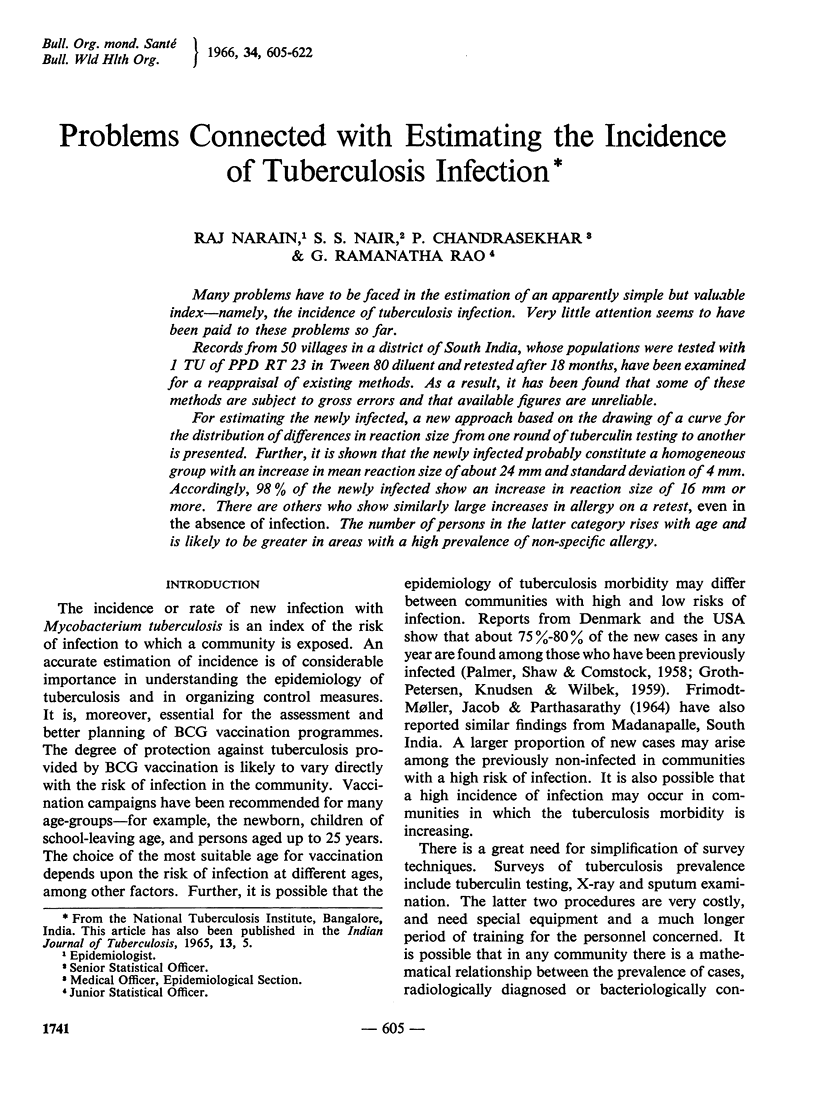
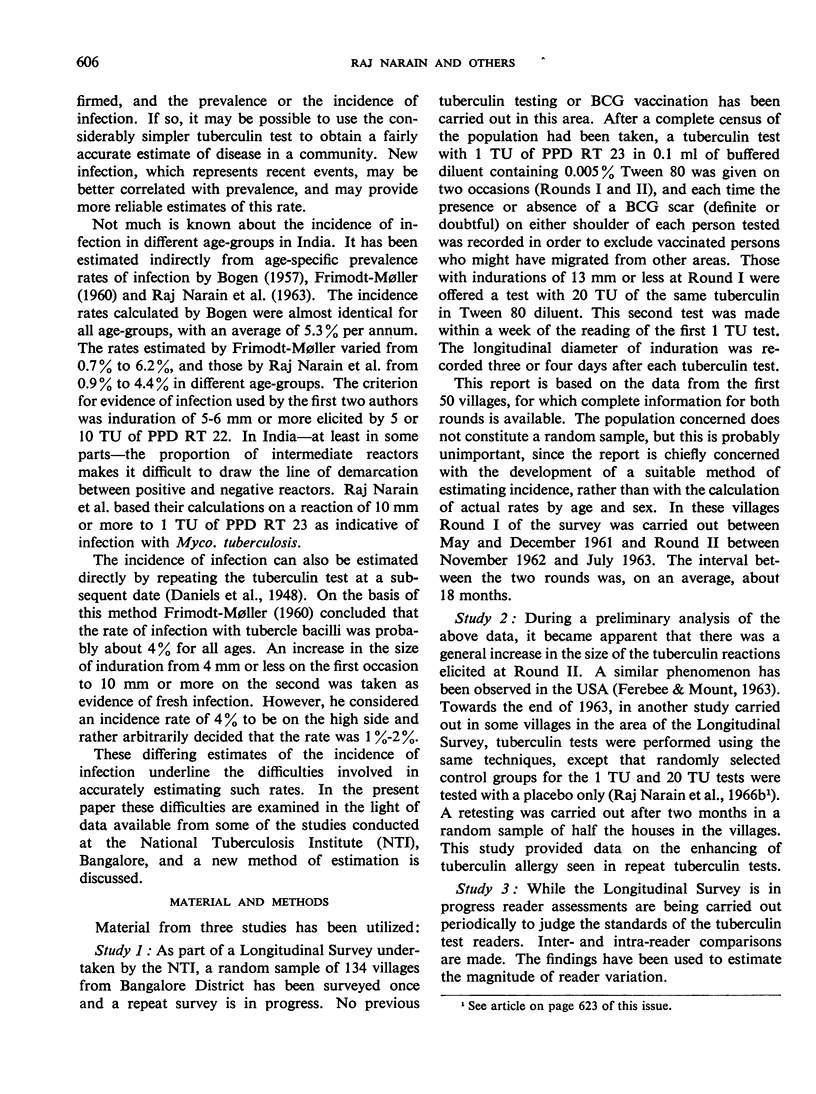
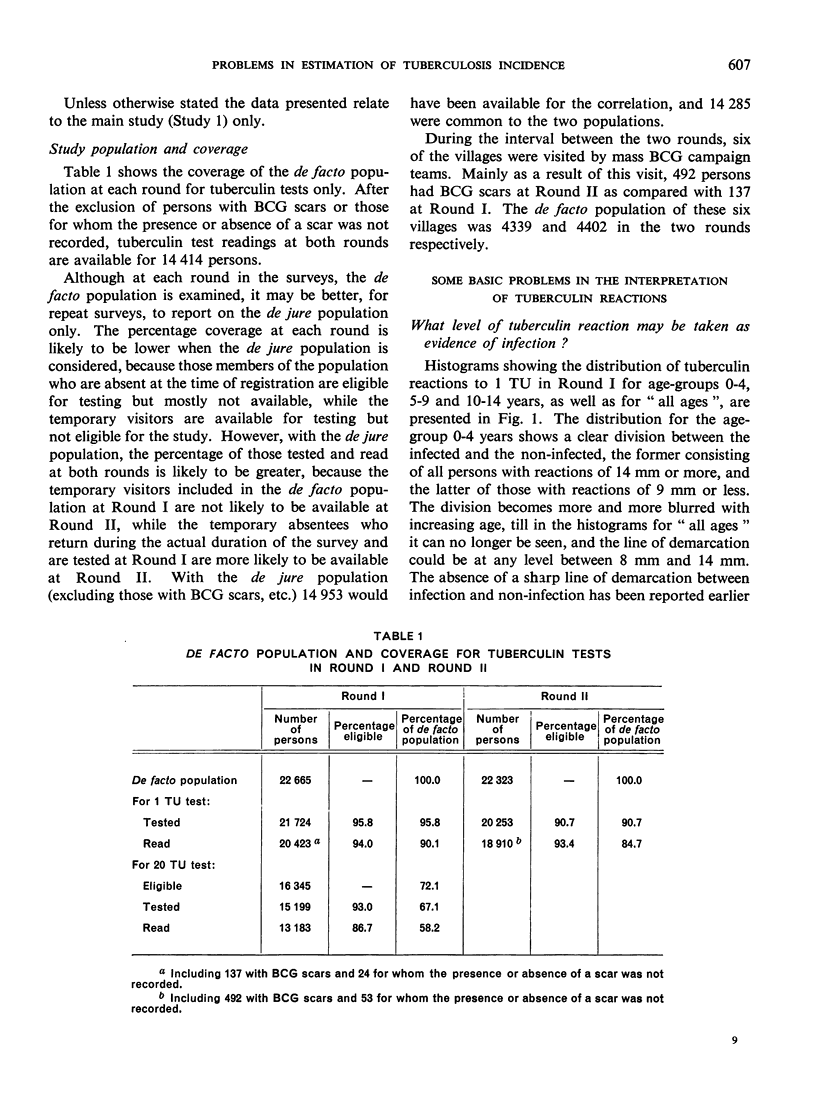
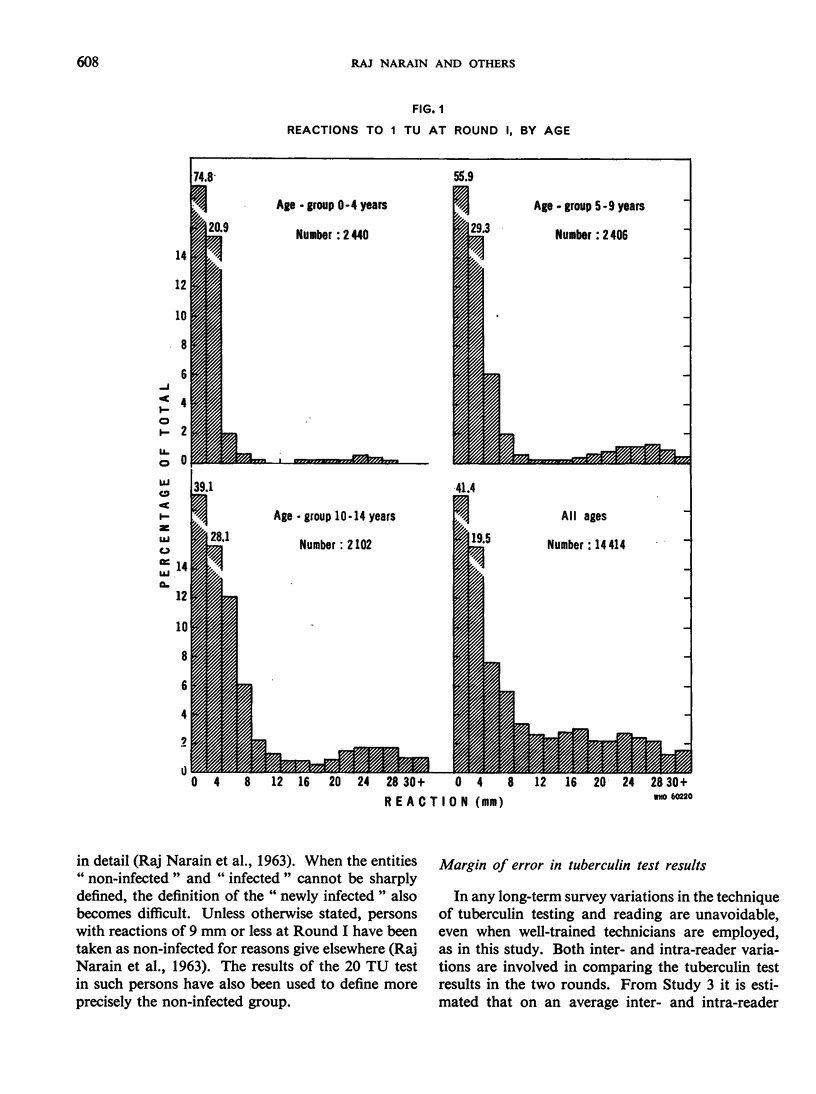
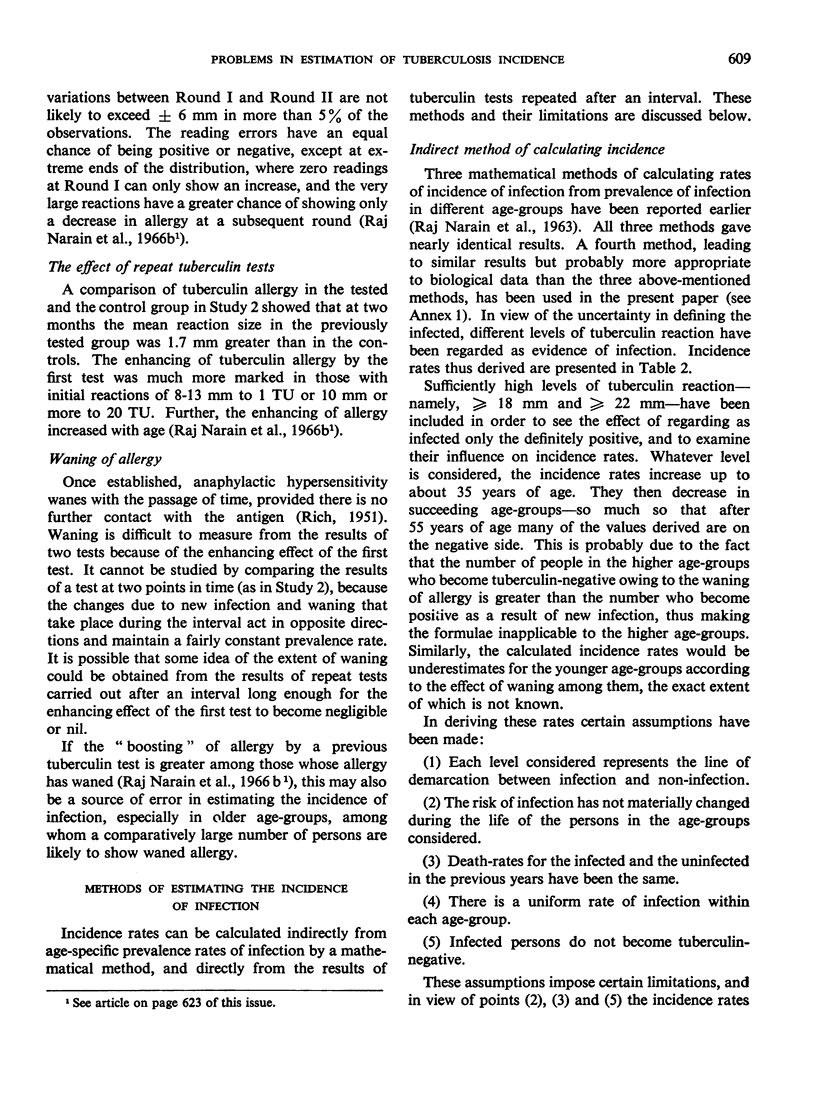
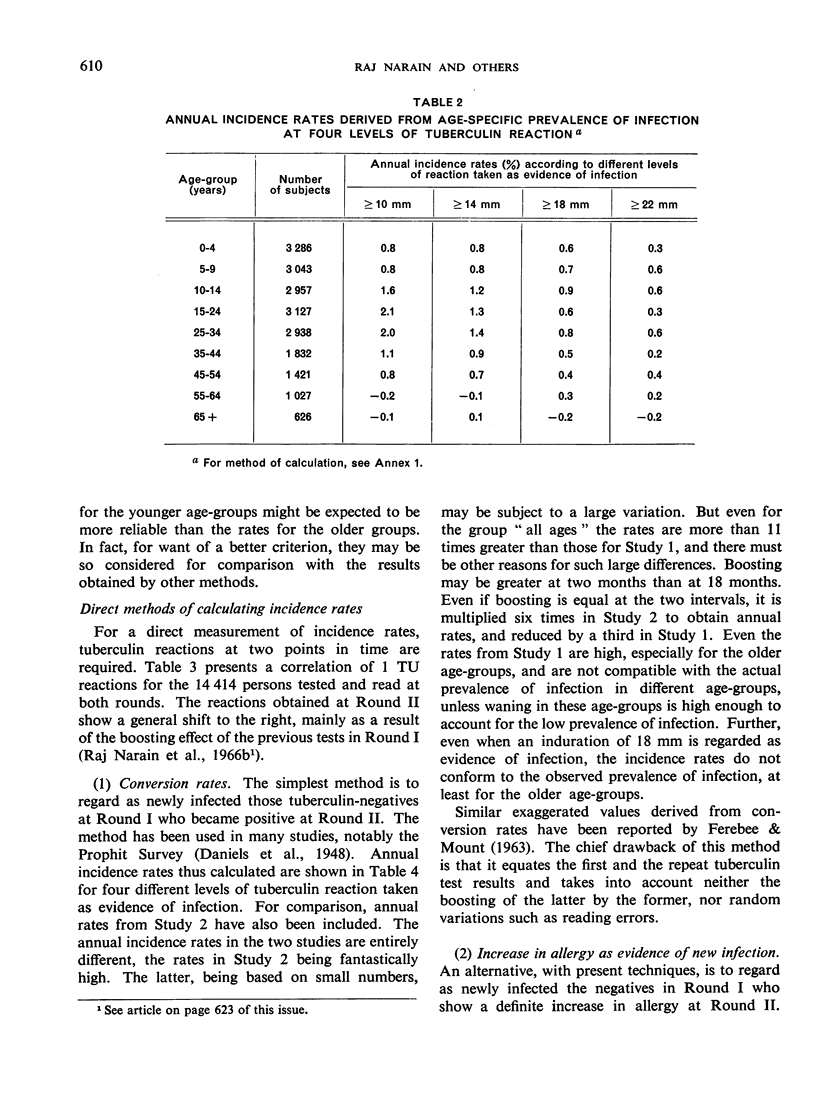
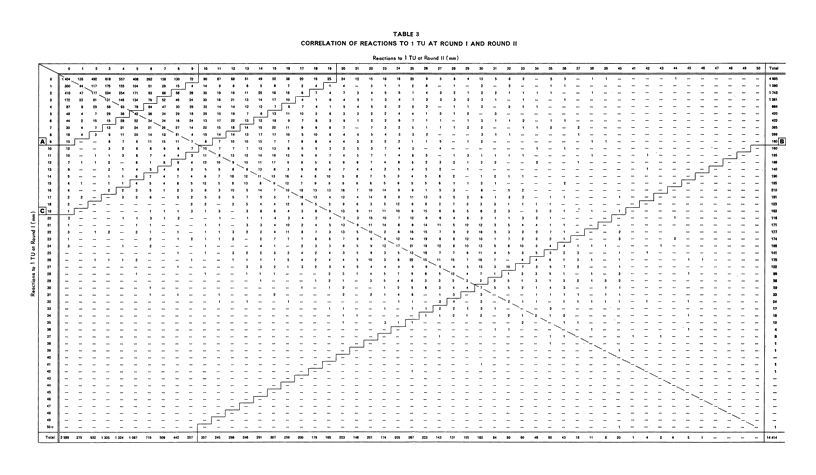
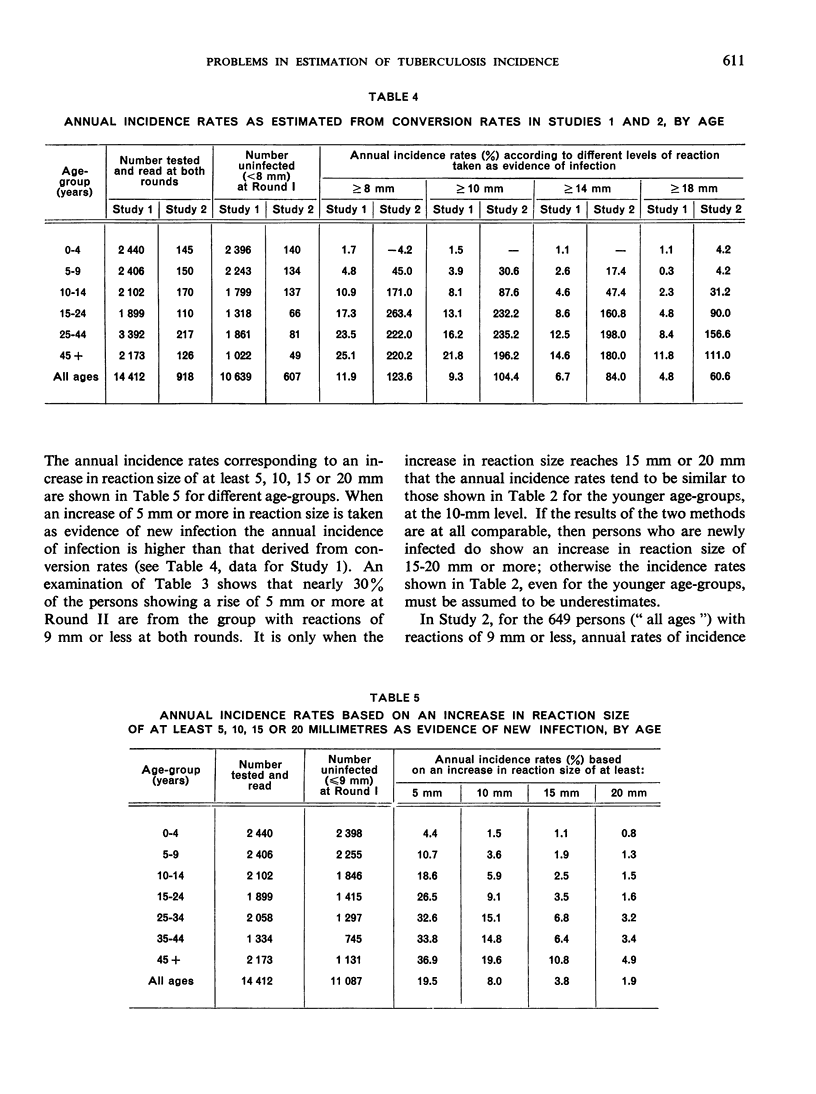
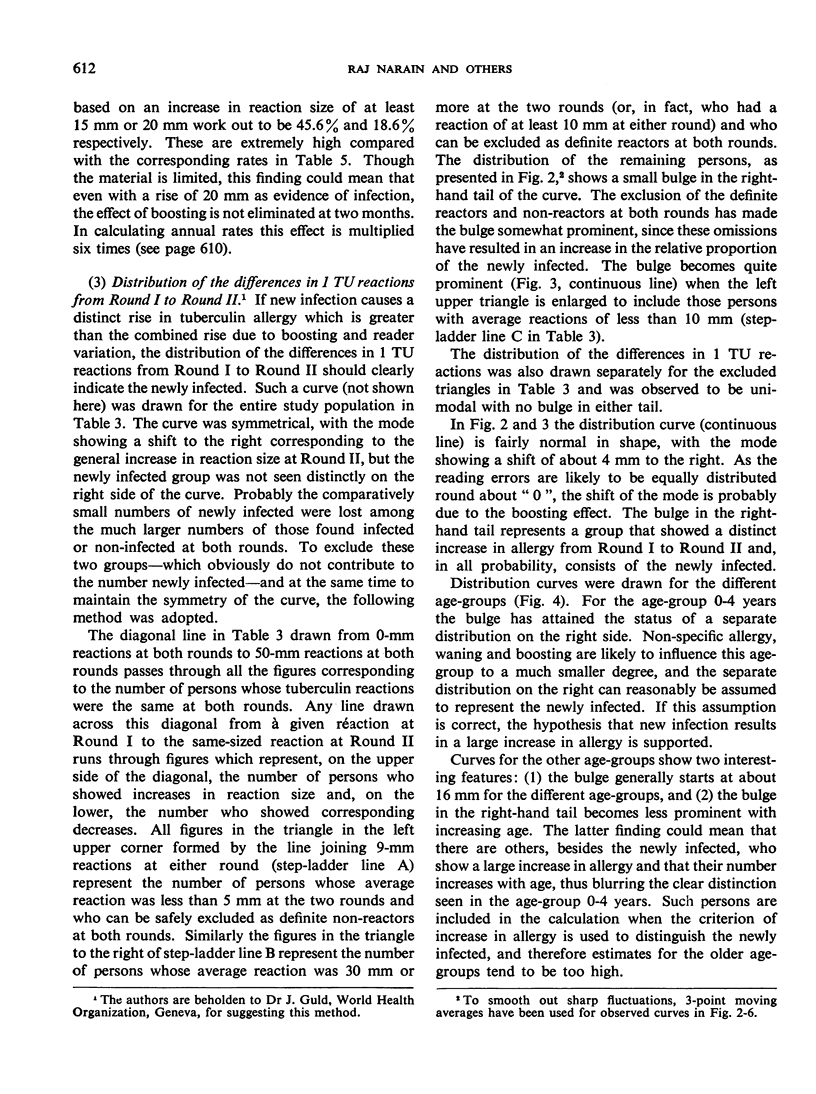
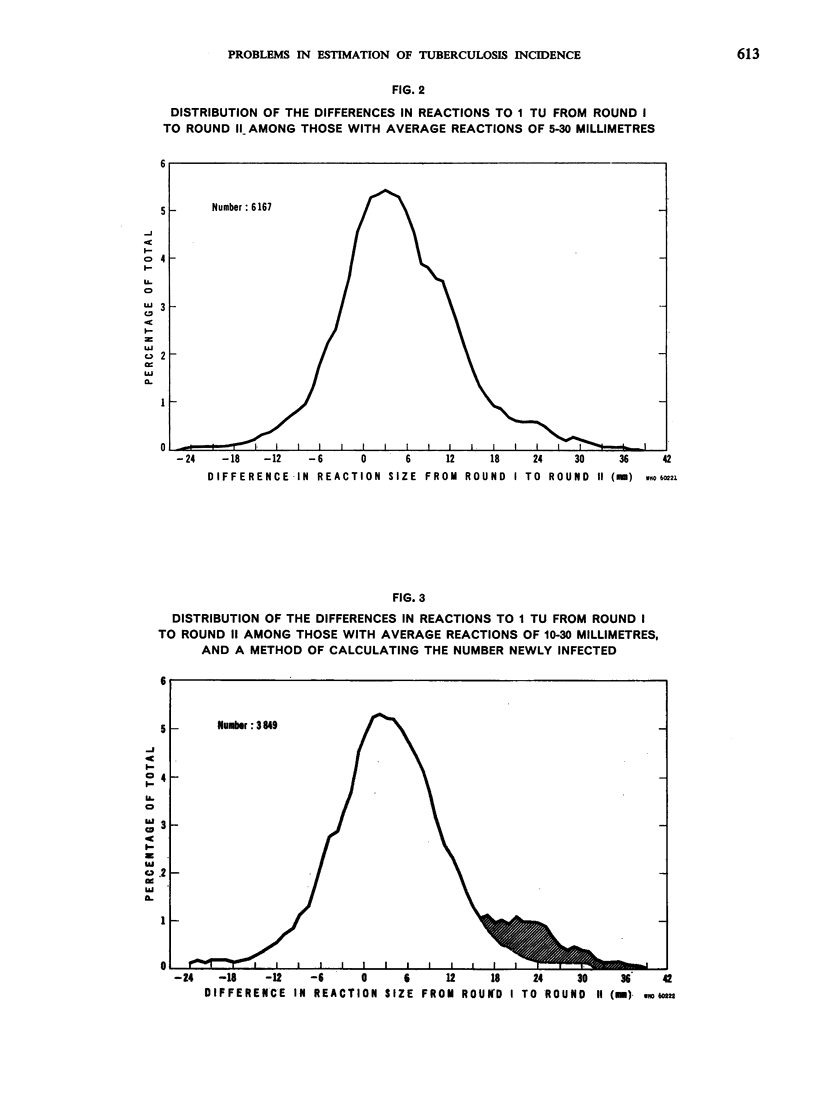
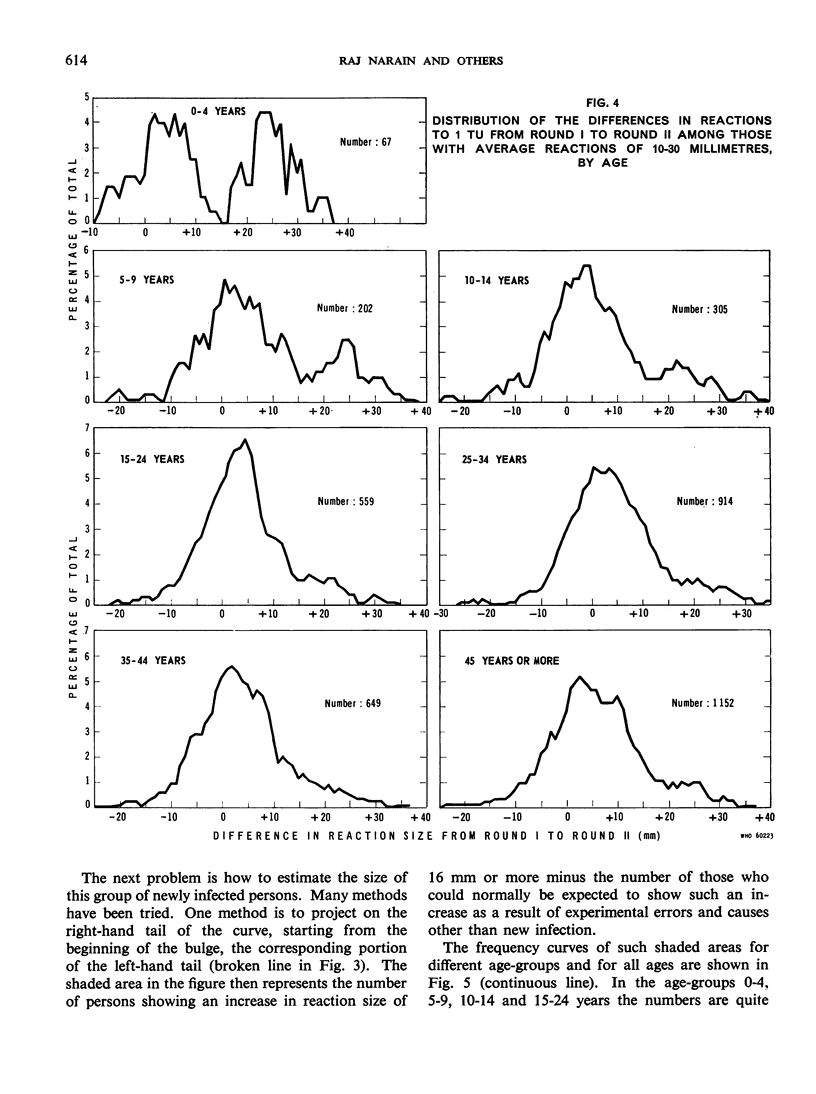
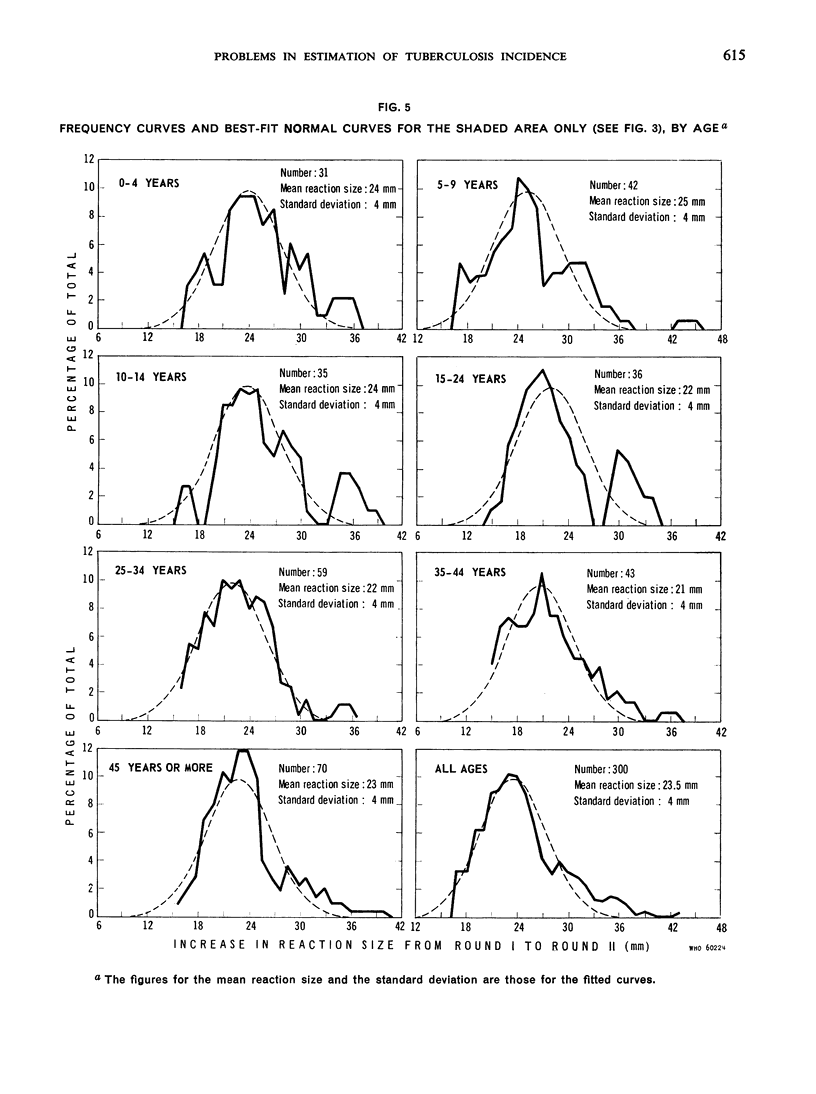
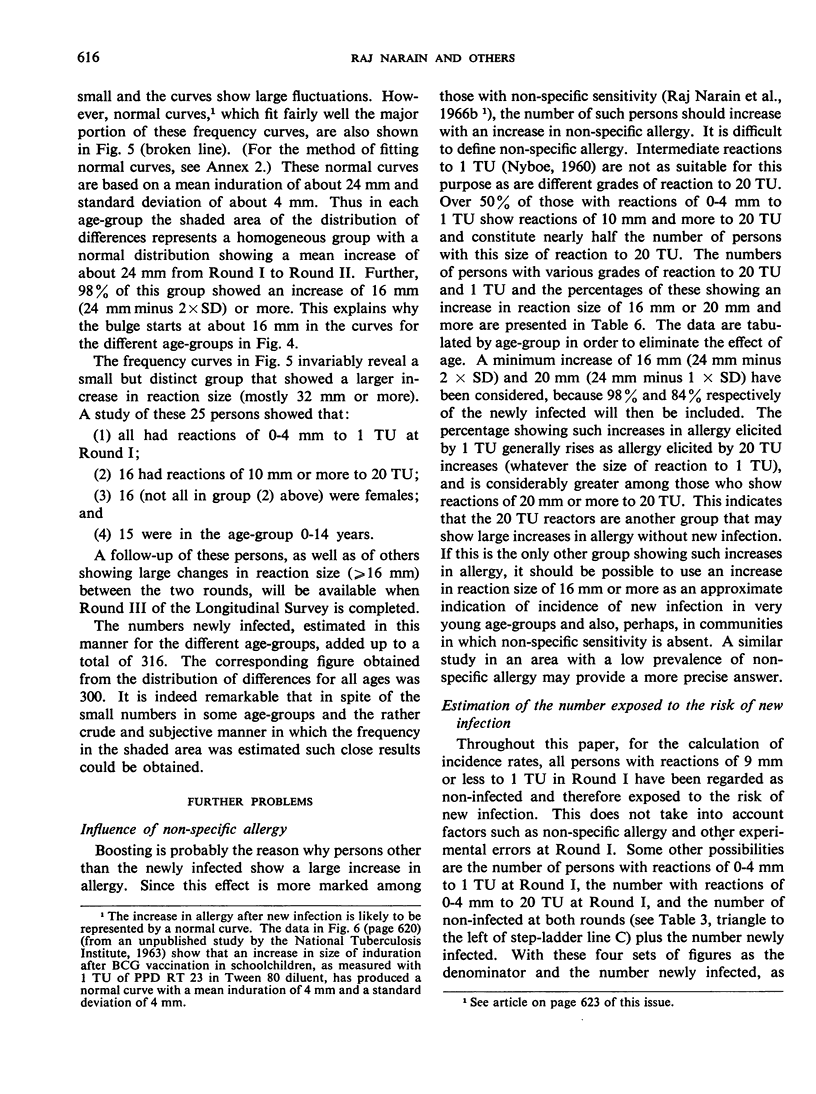
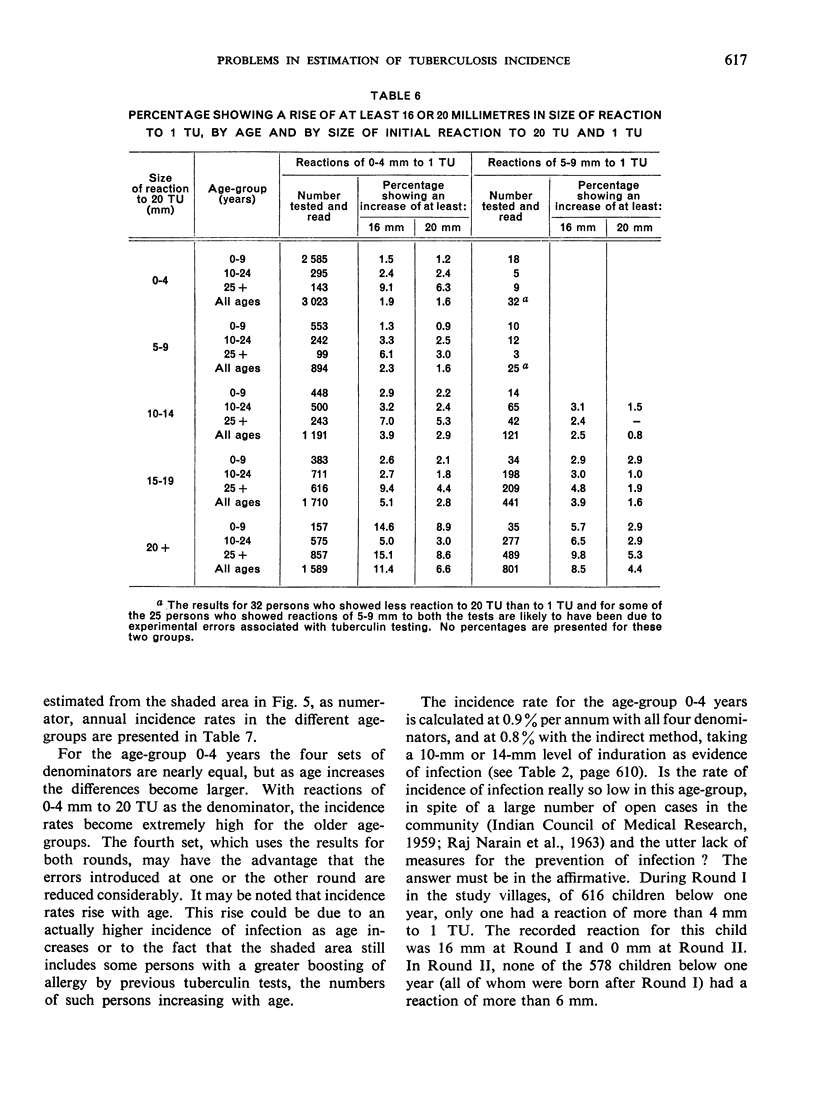
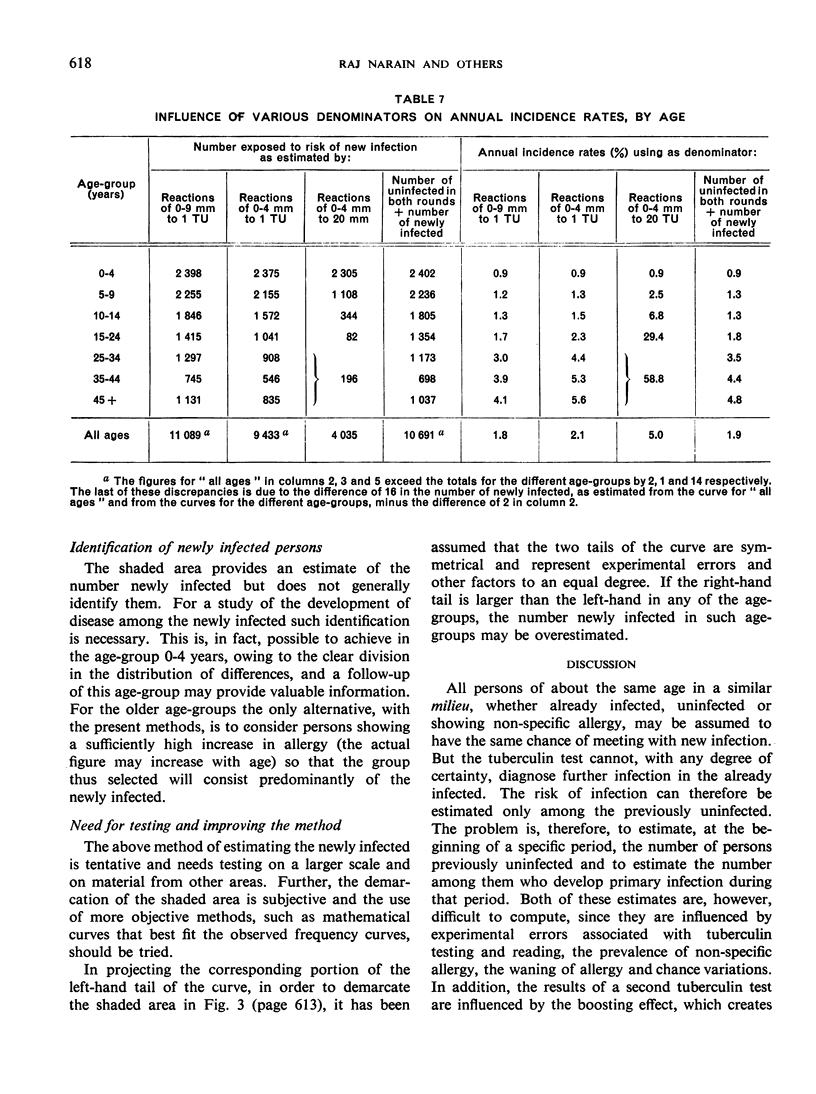
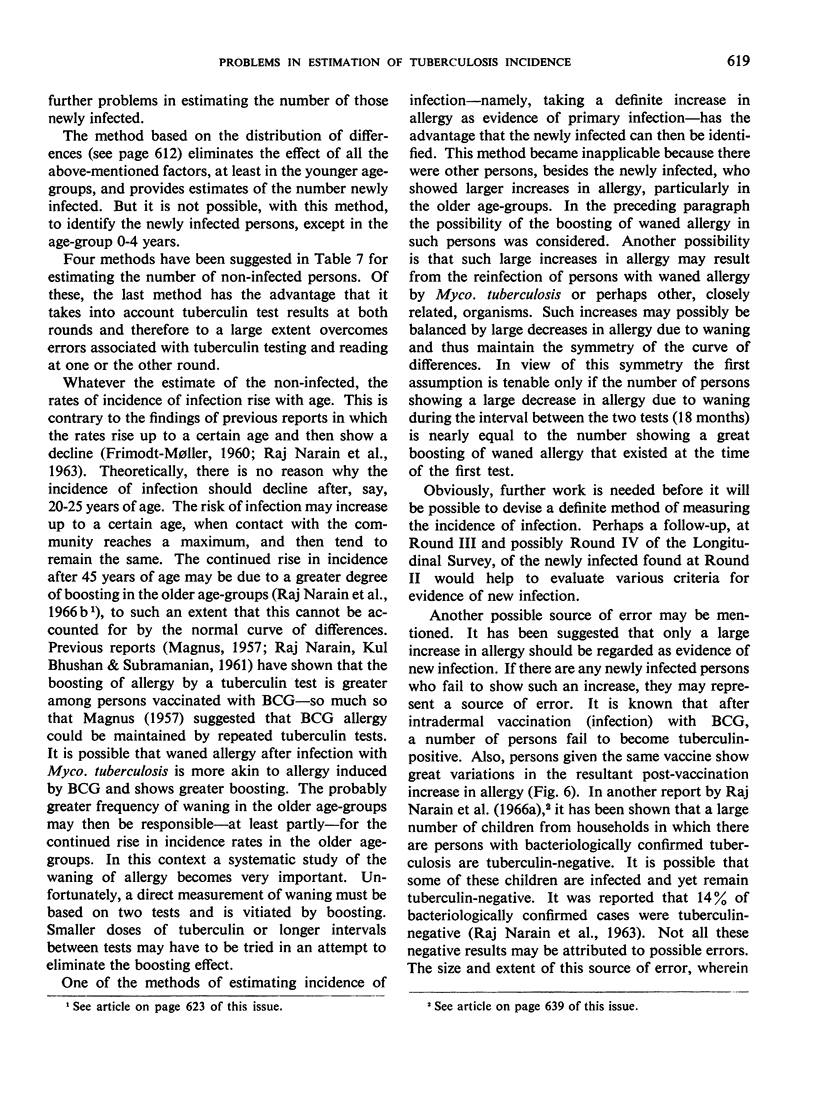

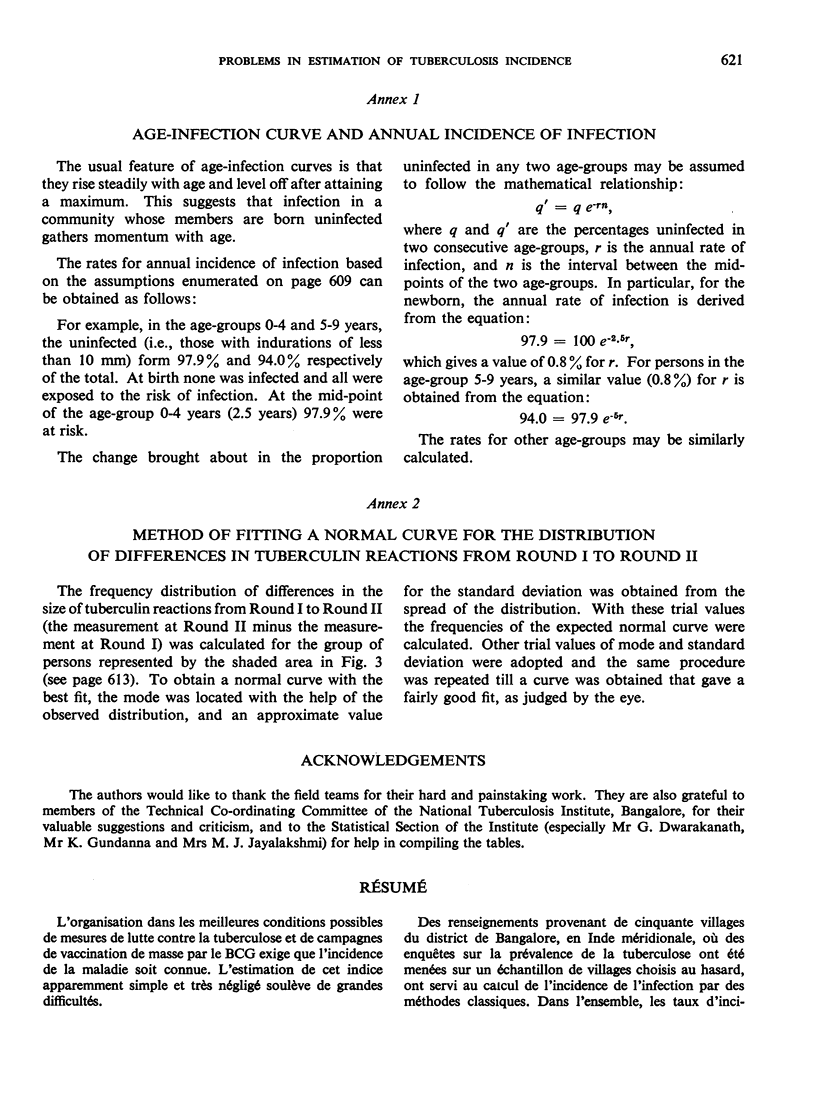
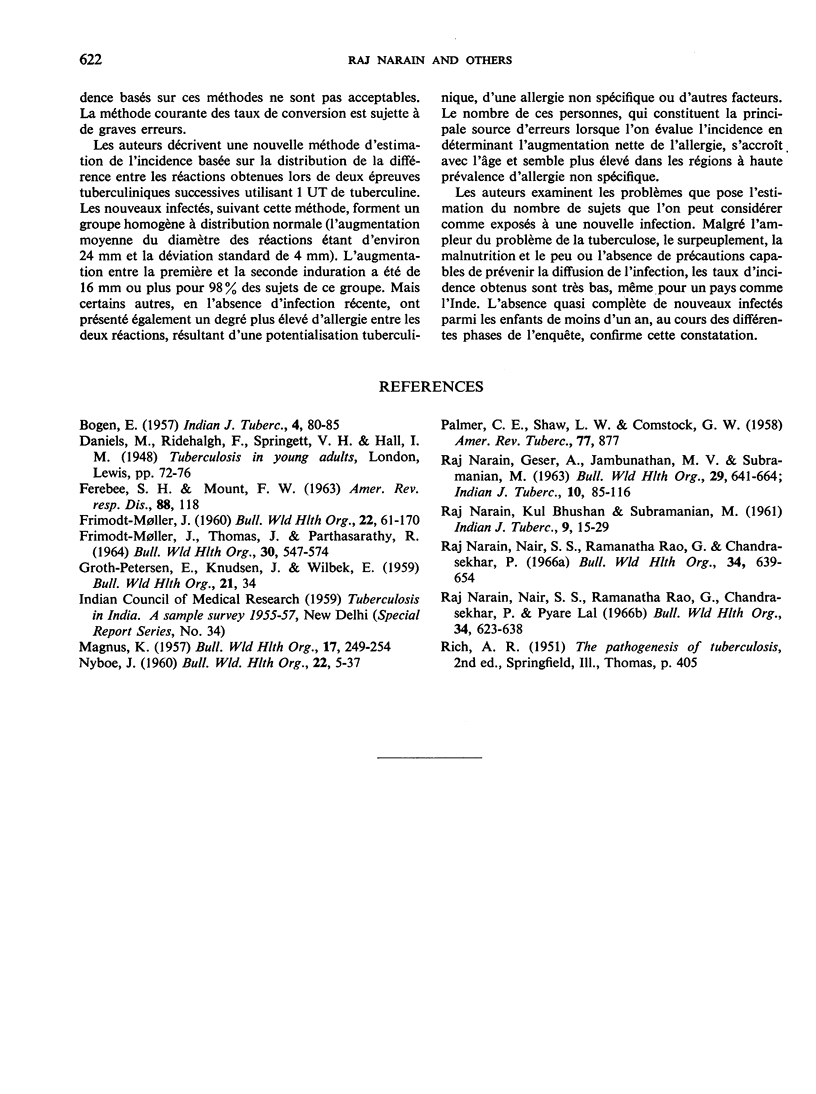
Selected References
These references are in PubMed. This may not be the complete list of references from this article.
- FRIMODT-MOLLER J. A community-wide tuberculosis study in a South Indian rural population, 1950-1955. Bull World Health Organ. 1960;22:61–170. [PMC free article] [PubMed] [Google Scholar]
- FRIMODT-MOLLER J., THOMAS J., PARTHASARATHY R. OBSERVATIONS ON THE PROTECTIVE EFFECT OF BCG VACCINATION IN A SOUTH INDIAN RURAL POPULATION. Bull World Health Organ. 1964;30:545–574. [PMC free article] [PubMed] [Google Scholar]
- MAGNUS K. Effect of intradermal tuberculin tests on BCG-induced allergy. Bull World Health Organ. 1957;17(2):249–254. [PMC free article] [PubMed] [Google Scholar]
- NARAIN R., GESER A., JAMBUNATHAN M. V., SUBRAMANIAN M. SOME ASPECTS OF A TUBERCULOSIS PREVALENCE SURVEY IN A SOUTH INDIAN DISTRICT. Bull World Health Organ. 1963;29:641–664. [PMC free article] [PubMed] [Google Scholar]
- NYBOE J. The efficacy of the tuberculin test: an analysis based on results from 33 countries. Bull World Health Organ. 1960;22:5–37. [PMC free article] [PubMed] [Google Scholar]
- Narain R., Nair S. S., Rao G. R., Chandrasekhar P. Distribution of tuberculous infection and disease among households in a rural community. Bull World Health Organ. 1966;34(4):639–654. [PMC free article] [PubMed] [Google Scholar]
- Narain R., Nair S. S., Rao G. R., Chandrasekhar P., Lal P. Enhancing of tuberculin allergy by previous tuberculin testing. Bull World Health Organ. 1966;34(4):623–638. [PMC free article] [PubMed] [Google Scholar]
- PALMER C. E., SHAW L. W., COMSTOCK G. W. Community trials of BCG vaccination. Am Rev Tuberc. 1958 Jun;77(6):877–907. doi: 10.1164/artpd.1958.77.6.877. [DOI] [PubMed] [Google Scholar]


